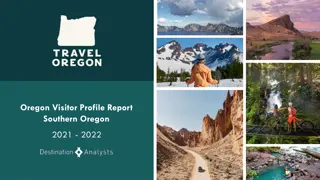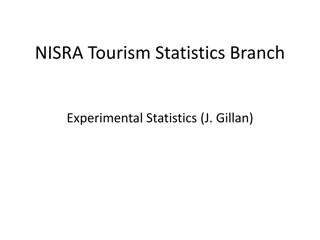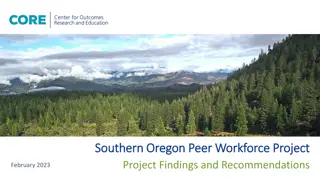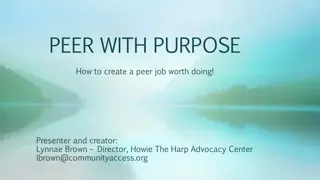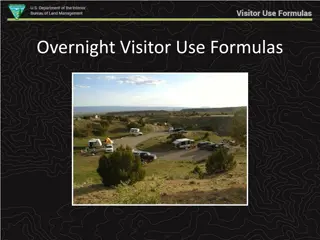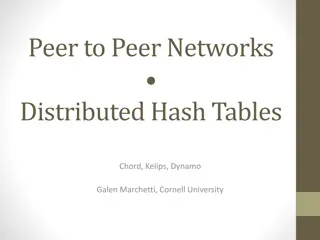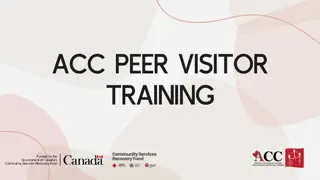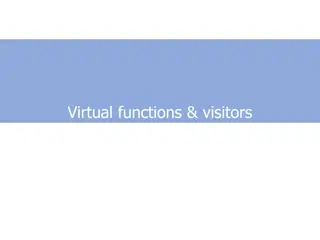Peer Support and Visitor Training for Amputees
Explore the world of peer support and visitor training for individuals who have undergone amputations. Understand the benefits of peer support, the role of peer visitors, and engage in group discussions to enhance knowledge and skills in providing meaningful support. Dive into role-playing activities to simulate real-life scenarios and improve interaction with those in need. Discover the attributes and benefits of peer support, along with when and where peer visiting can be most effective.
Download Presentation

Please find below an Image/Link to download the presentation.
The content on the website is provided AS IS for your information and personal use only. It may not be sold, licensed, or shared on other websites without obtaining consent from the author.If you encounter any issues during the download, it is possible that the publisher has removed the file from their server.
You are allowed to download the files provided on this website for personal or commercial use, subject to the condition that they are used lawfully. All files are the property of their respective owners.
The content on the website is provided AS IS for your information and personal use only. It may not be sold, licensed, or shared on other websites without obtaining consent from the author.
E N D
Presentation Transcript
ACC PEER VISITOR TRAINING
Health and Wellness
Benefits of Peer Support Group Discussion 1: What do you think the short-term benefits of peer support are? What do you think the long-term benefits are?
Benefits of Peer Support Group Discussion 2: What did you perceive to be the biggest benefit of peer support in your own amputation experience?
When could/can peer visiting be done? Group Discussion 3: If you had a peer support visitor, at what point in the amputation process did they play a role?
When could/can peer visiting be done? Group Discussion 4: If you had a peer visitor, where did you meet with them? Did you find this place to be beneficial? If not, what could be improved?
What is Peer Support & What is a Peer Visitor? Peer Support: What I Wish I Knew (Episode 2)
What is Peer Support & What is a Peer Visitor? Role Playing Activity: Groups of 2 One person - peer support One person with an amputation. Act out how you would approach the individual and how you would get to know them. Your goal is to try and figure out what their main concerns are and what resources they need Separate into groupsof 2 persons to facilitate this role play.
What is Peer Support & What is a Peer Visitor? Role Play Discussion: Identify the strengths and weaknesses of your role play scenario. What worked well? What could be improved?
Section 2: Roles and Responsibilities
Characteristics of a Peer Visitor Good own recovery progress Good listening skills Understand and guide the person seeking support Handle crisis situations Provide appropriate Resources Works within established boundaries
Characteristics of a Peer Visitor (continued) Asks questions and for help when needed Approachable and easy to communicate with Provide judgment-free care Show respect, empathy, and compassion Peer visitation is not about them Peer visitation is about the person seeking support Does not direct own beliefs onto the person
Peer Visitor Competencies Hope Flexibility and adaptability Demeanour Self-awareness and confidence Interpersonal Initiative and commitment Communications Critical thinking Continuous learning and development Self-management and resiliency
Roles and Responsibilities of a Peer Visitor Group Discussion Question: Are there any other roles or responsibilities you think should also be included for a peer visitor?
Characteristics of a Peer Visitor Fill in the Blanks: When a peer visitor is open to new ideas, they are competent in ________________. When they respond from an equal and sharing point of view, they are demonstrating a competent ________________. A peer visitor who listens with empathy and without judgment is demonstrating competency in ________________. Peer visitors who consider the outcomes of their actions are demonstrating ________________. critical thinking demeanor communication flexibility and adaptability
What is and What is not Allowed Scenario #1: Peer visitor: Hello, how are you doing today? Person with amputation: I m doing okay, I think, I m still getting used to my new leg Peer visitor: I can totally relate, don t worry it only took me 2 months to get used to mine.
What is and What is not Allowed Group Discussion Questions: Did the peer visitor demonstrate any inappropriate behaviour? Why why this behaviour inappropriate? What could have been done differently?
What is and What is not Allowed Scenario #2: Peer support: Good morning! How are you feeling today? Person with amputation: um..I don t know, I think I'm making progress with my arm, but it still feels really weird, it's taking me a long time to pick up objects, and it's all just so frustrating Peer support: That must be rough, I had a similar experience when I first started, do you want to hear my story?
What is and What is not Allowed Group Discussion Question: Do you think the peer support person demonstrated appropriate behaviour?
Ethics Principles of Practice Peer visitors are: Volunteers Hopeful Open-minded Nonjudgmental Empathetic Respectful Change facilitators Honest and direct Peer support is: Mutual and reciprocal Equally shared power Strengths-focused recovery Transparent Personally driven
Ethics Discussion Activity: Select 2 principles of practice Write on a piece of paper how you would ensure these principles are met during a visit Take about 5 minutes to prepare Discuss
Question #1: True or false, peer visitors exercise power to direct the person they are visiting to do what they know is best for the person? Question #2: True or false, peer visitors are able to respond emotionally and/or spiritually to what the other person is saying? Question #3: True or false, peer visitors may share their stories as they relate to the challenges of the person they are visiting? Ethics
Body Language Body Language
Body Language low receptivity Interest discomfort Approachability Anxiety interest Raised eyebrows signal ________________. Eye contact shows ________________. Crossed legs are a sign of ________________. Shaking leg signals ________________. Voice rising or lowering suggests _____________. Open arms signal ________________.
Active Listening Active Listening
Listening is a magnetic and strange thing, a creative force. The friends who listen to us are the ones we move toward. When we are listened to, it creates us, makes us on fold and expand KARL A. MENNINGER The word listen contains the same letters as the word silent ALFRED BRENDEL
Communication Skills Discussion Activity: Create a list of open- and close-ended questions you can ask in different contexts.
Cross-cultural Communication 10 Tips for Effective Cross-Cultural Communication
Silence: Silence is an Excellent Communication Tool Silence is an Excellent Communication Tool | Business Analyst Training
Practicing with Silence Choose a partner. Take a few seconds to silently look each other directly in the eyes. Begin by saying a couple of sentences about something important to you. You maintain direct eye contact the whole time, and before the other person is allowed to respond, 10 full seconds must elapse in total silence while you continue to hold eye contact. Then the other person responds with a statement or a question, in one or two sentences. Again, before you respond, you sit facing each other for another 10 seconds of eye contact and silence. Go back and forth you go like this for about three to four minutes.
Silent Activity Discussion What did you notice during this exercise? How do you think silence like this can result in better therapeutic communication?
Signs of Recovery A sense of balance in emotions and relationships Awareness of abilities and limitations Positive self-concept and a sense of accomplishment Ability to get around in the environment Participation in social, vocational and/or recreational activities Setting Priorities
What impedes Recovery? Issues related to the amputation Individual characteristics Characteristics of the physical and social environment Personality traits
Discussion Recovery Challenges What did you feel was the greatest barrier to your recovery?
Phases of Recovery Enduring Suffering Reckoning Reconciling Normalizing Thriving Surviving surgery and pain Questioning Why me? Becoming aware of the new reality Putting the loss in perspective Reordering priorities Living life to the fullest
Phases of Recovery Group Discussion: Did you experience all 6 phases of recovery? If so, did you experience them in this order?
Phases of Recovery Question #1: True or false: Coming to terms with the extent of the loss is referred to as reconciling? Question #2: True or false: Everyone reaches the thriving stage of recovery? Question #3: True or false: Active listening with empathy is an appropriate action when your person is in the suffering phase of recovery?
Coping Scenario 1 You walk into the hospital room of a person who has just undergone an above knee amputation. She was an avid biker prior to the accident, and you see her selling her collection of bikes and accessories online. You ask her why she is doing this, and she shrugs and replies I m never going to be able to do what I love again so may as well get started on selling things
Coping Scenario #1 Discussion Questions: What stage of recovery do you think she is undergoing? How would you reply to someone if they expressed this to you?
Coping Scenario 2 You have been peer support for a person since the beginning of their amputation process. It has been 4 months since you started seeing them. You've noticed that the person has started to withdraw from social situations and avoids leaving the house. The person s family does not seem to be worried about this behaviour. They now have little interest in seeing their friends or family and are growing increasingly isolated in their bed.
Coping Scenario #2 Discussion Questions: Is this a healthy coping strategy? How would you address this with the person? How would you attempt to improve their situation?
Spirituality in the recovery process Subjective experience of each person as they search for meaning in their lives Linked to: Improved physical health Improvements in mental health May act as a coping mechanism Existential spirituality improves general health and social integration in persons with amputation (Peirano & Franz (2012) During a peer visit questions about spirituality and faith may arise As a peer visitor you are there to listen and encourage communication Important not to impose your beliefs on the person you are visiting
Setting up the Visit Role Playing Activity Turn to a partner and pretend you are scheduling a visit with them. Ask questions that will help you prepare for the visit. Age; date, level, and cause of amputation; Any other health conditions that might have an impact on the effectiveness of the visit; Emotional state; The types of information that have been requested by the person with amputation or by their family
The Visit To Dos Be on time Stop at the nurse s station (if visit in hospital) Confirm that this is a good time Ensure amputee is comfortable for visit Include family and friends Reschedule if there is medical tests or if unsafe environment Minimize distractions Be aware of time zones (phone calls or video conferencing) Be mindful of the amputee s demeanor and energy level












